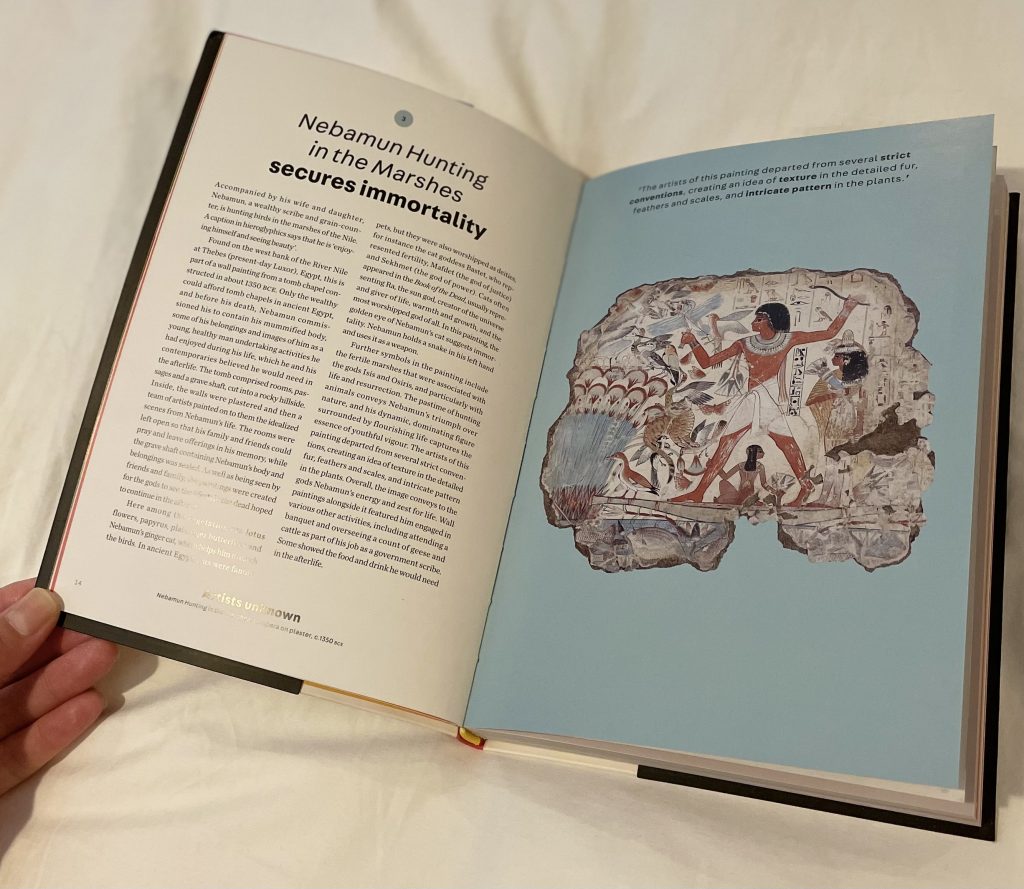The Art of Science—Versailles at the Science Museum, London
Have you ever wondered how it would feel to witness the grandeur and opulence of the 18th-century French court? Then you might want to go to London.
Edoardo Cesarino 19 December 2024
4 November 2023 min Read
Depending on where you stand in the “what makes art” debate, you may think that art just is – it doesn’t need to be explained. But, if you have ever stood in front of a work of art puzzled (or know someone who has), wondering exactly what makes it so amazing, then this book review is for you.

Book cover of Art: Explained – 100 Masterpieces and What They Mean by Susie Hodge, Laurence King, 2022.
Susie Hodge is an art historian from England. She is the author of over 100 books that seek to make art more accessible to viewers. Her approach encompasses understanding art through history, exploration, and even participation (as in her books about learning to draw). In her offering from 2022, Art: Explained – 100 Masterpieces and What They Mean, she takes readers on a journey through time and space as she examines art and its intrinsic link to the human experience.
In the introduction to this new art book, she writes:
Art has become an essential part of human existence, and creativity is one of the traits that define us as human… The first art we know of was produced more than 30,000 years ago, and over the thousands of years since, countless artworks have been produced… Yet, despite this incalculable amount of creativity, every single work of art is different from all others; no two are the same.
Art: Explained – 100 Masterpieces and What They Mean, Laurence King, 2022.

Venus of Willendorf, 30,000-25,000 BCE, Naturhistorisches Museum, Vienna, Austria. Photo by Bjørn Christian Tørrissen via Wikimedia Commons (CC BY-SA 4.0).
The interaction between creator, work of art, and viewer enables the artist to send a direct message to everyone viewing his or her work. These messages come to us through space and time, straight from the source! The connection is a unique and deeply personal one, almost magical. Artists are always saying something through their work, even in cases where the art was commissioned. This book aims to demystify and illuminate these messages and bring them to every reader.
With this focus in mind, the author selected 100 works of art, arranged them in chronological order, and devoted a spread to each. The individual spreads showcase a full picture of the work with its corresponding caption, a subtitle highlighting the work’s purpose or message, and a brief essay. These essays explore the context behind the creation of each work, provide interesting facts to better appreciate the artist’s intent, and put the work in context through the long tapestry of human history.

Nebamun Hunting in the Marshes secures immortality in Art: Explained – 100 Masterpieces and What They Mean by Susie Hodge, Laurence King, 2022. Photo by the author.

Table of Contents of Art: Explained – 100 Masterpieces and What They Mean by Susie Hodge, Laurence King, 2022.
The choice to not separate the artworks by historical period is an interesting—but effective—one. Because of it, rather than giving the impression of a scholarly work, the book seems to be reaching people from all walks of life. The message is clear: art is for everyone because art is life. The story of art is the story of people. So, if you are interested in people, then art is for you! The succession of artwork after artwork, without a break, emphasizes this continuity within history and the people living it.
The primary audience for the book are readers who are interested in art, but may not know where to begin. However, more experienced learners may also find things to enjoy in the gems of knowledge sprinkled throughout the essays. But, beyond that, it is the “dialogue” between artists, the author, and thoughtful readers that forms the main treasure of this book. As readers reflect on the selections and commentary, they participate fully in the creative process. It is this communication that, ultimately, is the aim of all art.

Caspar David Friedrich, Wanderer Above the Sea of Fog, c. 1817, Hamburger Kunsthalle, Hamburg, Germany.
Susie Hodge invites the reader on a journey. And, any good journey makes us step outside ourselves, examine ourselves, and come back different. Changed.
In the introduction, Susie Hodge shared a few quotes about what artists’ believed their purpose was for creating. Among the quotes she shared was one from Vincent Van Gogh, who said, “I want to touch people with my art.” Rodin said, “The main thing is to be moved, to love, to hope, to tremble, to live.” Georgia O’Keeffe put the creative impulse like this: “I made you take time to look at what I saw.” And, after we looked – what is next?
Well…
After we looked, we are fully in on the conversation. And, as good conversationalists, the next step is to keep the talk going.
DailyArt Magazine needs your support. Every contribution, however big or small, is very valuable for our future. Thanks to it, we will be able to sustain and grow the Magazine. Thank you for your help!